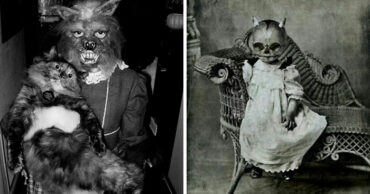
If you are unfamiliar with the book, “The Tiger That Came To Tea” then you probably can watch the television adaptation and think it is a cute, relatively harmless children’s story that is just being honored after selling more than 5 million copies and recognizing a sweet, 90 year old woman. Then there is the adult side to the story that reaches into the darker, more sinister side of the meaning of the book.
First, if you haven’t read the graphic novel Maus you may want to give it a gander before watching and thinking about this upcoming children’s show. Writers oftentimes will take their characters, animated or otherwise, from people they actually have known. This is the first point in making the case of what follows here. The storyline is very simple. A tiger comes to the house while a mother and her young daughter (Sophie) are drinking tea. The tiger invites himself in and proceeds to eat and drink the family literally out of house and home. Then leaves. But remember this is a British children’s story, a country that personally experienced World War 2 in ways most American’s cannot imagine.
Author Judith Kerr admits during a BBC interview that, “When I decided to do the book, I remember wondering what the tiger should look like, whether he should have clothes.” Kerr’s family lived in pre-World War 2 Berlin, and her father, Alfred Kerr, was an open critic of the Nazi regime. In the early years of the 1930’s, Adolf Hitler was seen as someone who was acting in the best interests of Germany after the devastating economic sanctions imposed on it after the loss of the first World War. Though the tiger’s appearance was obvious, whether it should conceal itself as a simple visitor or make its naturally aggressive nature known from the outset can be seen as a dilemma for Kerr.
The fact that all of her father’s books and writings were seized and burned, and that he was put on the Nazi death list seems to be an added historical not of importance.
The absence of the father when the tiger first initially appears at the door is of no small importance. Kerr tells the BBC that her father fled Germany to go to Prague, Czechoslovakia, but without his family. They would soon follow, leaving Berlin on the very day that Hitler took over the political and military force of Germany. She was just 9 years old.
Consider another quote from the BBC interview by Kerr: “My father would have had very special treatment by the Nazis, so a doctor friend of ours gave them suicide pills.” Is this an aging memory speaking or an underlying part of the theme of the book? She talks about her father getting special treatment, obviously a euphemism for torture and death, but them says the doctor gave “them” suicide pills. Obviously she was referring to both her mother and father, since it was likely they both would have received the “very special treatment.” This statement alone suggests there are 9 year old memories sanitized to avoid having to deal with the horrors of war.
The case can be made that this psychoanalysis of the book (and the author) that have been going on since the book made it to print is overblown. After all, the only person who actually knows what the meaning of the book is — is the author themselves. But there are too many coincidences to just live and let live, especially when you consider that what is a rather short and uneventful story continues to be of interest to children and historians alike.
Kerr states over and over that the book was simply intended to be a children’s bedtime story. While she doesn’t deny the personal story of her childhood and the possible connections people may make, she claims it is all innocent fun. It is likely that both “The Tiger That Came To Tea” and Kerr herself will be psychoanalyzed for another 50 years. Children are amazingly adaptive to traumatic situations, and only the cruelest person would intensively analyze a 90 year old woman to arrive at the truth of the matter.
As for the program itself, Ann-Janine Murtagh, Executive Publisher of HarperCollins Children’s Books said, “We are incredibly proud to publish Judith Kerr and how wonderful to be bringing her iconic picture book to life for television whilst we celebrate the golden anniversary year of The Tiger Who Came to Tea.” If you are familiar with the movie Persepolis you can see that much of the movie is the result of hand drawings. The same will be true of “The Tiger That Came To Tea.” Persepolis is a similar account of a child’s memories growing up and eventually leaving her home country (Iran).
So enjoy the show when it arrives at a channel near you. But before then you may want to read or re-read Maus or watch Persepolis once again — just for the fun of it.
By the way. The tiger never returns.
 Follow Us
Follow Us





